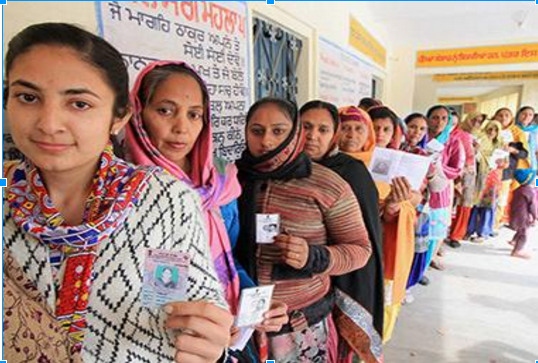
EC Seeks Funds For VVPAT Machines At Every Polling Booth For 2019 General Elections To Ensure Fairness
20 March 2017 7:33 AM GMT
The Election Commission of India (ECI) has declared the use of Voter Verified Paper Audit Trail (VVPAT) along with Electronic Voting Machine (EVM) to be implemented at every polling booth by 2019 general elections.
This declaration comes amidst the controversy of EVMs being tampered with.
Delhi Chief Minister Arvind Kejriwal and Bahujan Samaj Party (BSP) chief Mayawati have alleged that EVMs were altered in the recently concluded Punjab and Uttar Pradesh elections. Kejriwal went on to claim that about 20-25% of AAP votes were transferred to Shiromani Akali Dal (SAD)-Bharatiya Janata Party (BJP) coalition in the Punjab Elections.
What is VVPAT?
VVPAT is a verification system which is attached to the EVM. It allows the voter to check whether their vote was cast correctly. VVPAT has an electronic vote recorder (DRE), which prevents any fraud and even detects a malfunctioning equipment.
It is beneficial because recounting of ballots is unfeasible in non-document ballot voting system. VVPAT has a printer attached to it which prints out a slip bearing the name and the symbol of the candidate. The slip can be referred to in case of any ambiguity or suspected foul play. It helps the voter to intercept his/her vote. This slip is human readable and proves to have an edge over the conventional machines.
Contrastingly, in corrupt voting machines, the votes can be changed without detection and also be stored. These stored might not always be the intended votes.
The Rule 49A of Election Rules, 1961, states:
“Every electronic voting machine (hereinafter referred to as the voting machine) shall have a control unit and a balloting unit and shall be of such designs as may be approved by the Election Commission. Provided that a printer with a drop box of such design as may be approved by the Election Commission may also be attached to a voting machine for printing a paper trail of the vote, in such constituency or constituencies or parts thereof as the Election Commission may direct”
In 1899, Joseph Gray first introduced mechanical voting machine which was used to record votes. This VVPAT was dormant for several years only to be revived in 1992 by Rebecca Mercuri.
The first use of VVPAT came in 2003 across the state of Nevada.
In India, the use of VVPAT was first suggested in 2010 All Party Meeting. The same was first used in the Nagaland by-election in 2013 and in 2014 Lok Sabha Elections. VVPAT was used to ensure fair practice.
This year VVPAT was used in all the 40 constituencies of Goa, 30 constituencies in Uttar Pradesh and in 33 assembly segments in Punjab.
Currently, about 20,000 VVPAT machines have been procured, and further 67,000 machines are yet to be delivered. ECI wants to make use of VVPAT machines in all the polling booths for the 2019 elections, for which, about 1,615,066 machines are needed.
Since 2014, the ECI has been pursuing the Government for the sanction and release of funds of Rs 3174 crore to introduce VVPATs by 2019 elections. The Supreme Court has permitted the use of VVPAT in gradual phases.
Shortcomings of VVPAT
- Most of the voters do not pay much attention to verify their choices, hence negating the whole purpose.
- The audit trail is released using an underlying piece of software, which can be corrupted and may misread the voters’ choice.
- The VVPAT machine is not economically feasible.
- A possible attacker can track the order of the votes cast, hence compromising the secrecy of the vote.
- In cases where the name and symbol of the candidate do not match with the one voted for, the presiding officer has to obtain written declaration from the voter. The whole process app to be quite time-consuming and tedious, and voters may be discouraged from approaching the concerned authorities.
In the recently concluded Punjab elections, the use of VVPAT in 33 assembly segments proved to be a nightmare. During polling, about 187 of these machines were replaced, affecting 25 poll stations in Majitha and ten poll stations in Sangrur and Muktsar each. Out of the 6,293 VVPATs, about 255 failed during the actual poll.

Image Courtesy: Firstpost
Also, there was a sense of fear among the voters regarding the secrecy of their votes. Jasteg Singh of AAP claimed that leaders of SAD had threatened the voters, saying they would be able to track the voting pattern using VVPAT.
Despite speculations surrounding the reliability of VVPAT machines, the EC has said that it is gearing to make the voting system watertight by introducing it by the 2019 Lok Sabha polls.
 All section
All section













